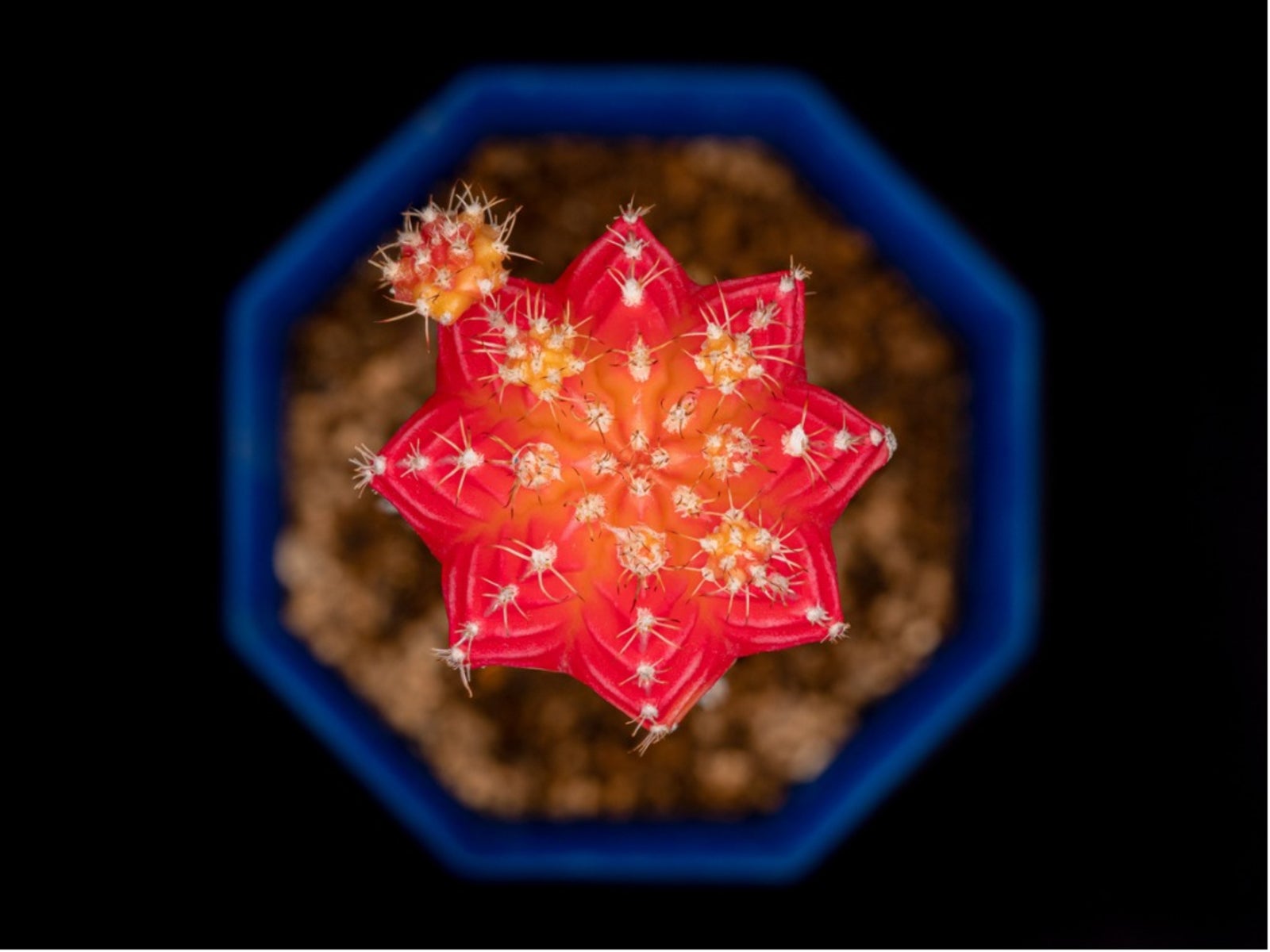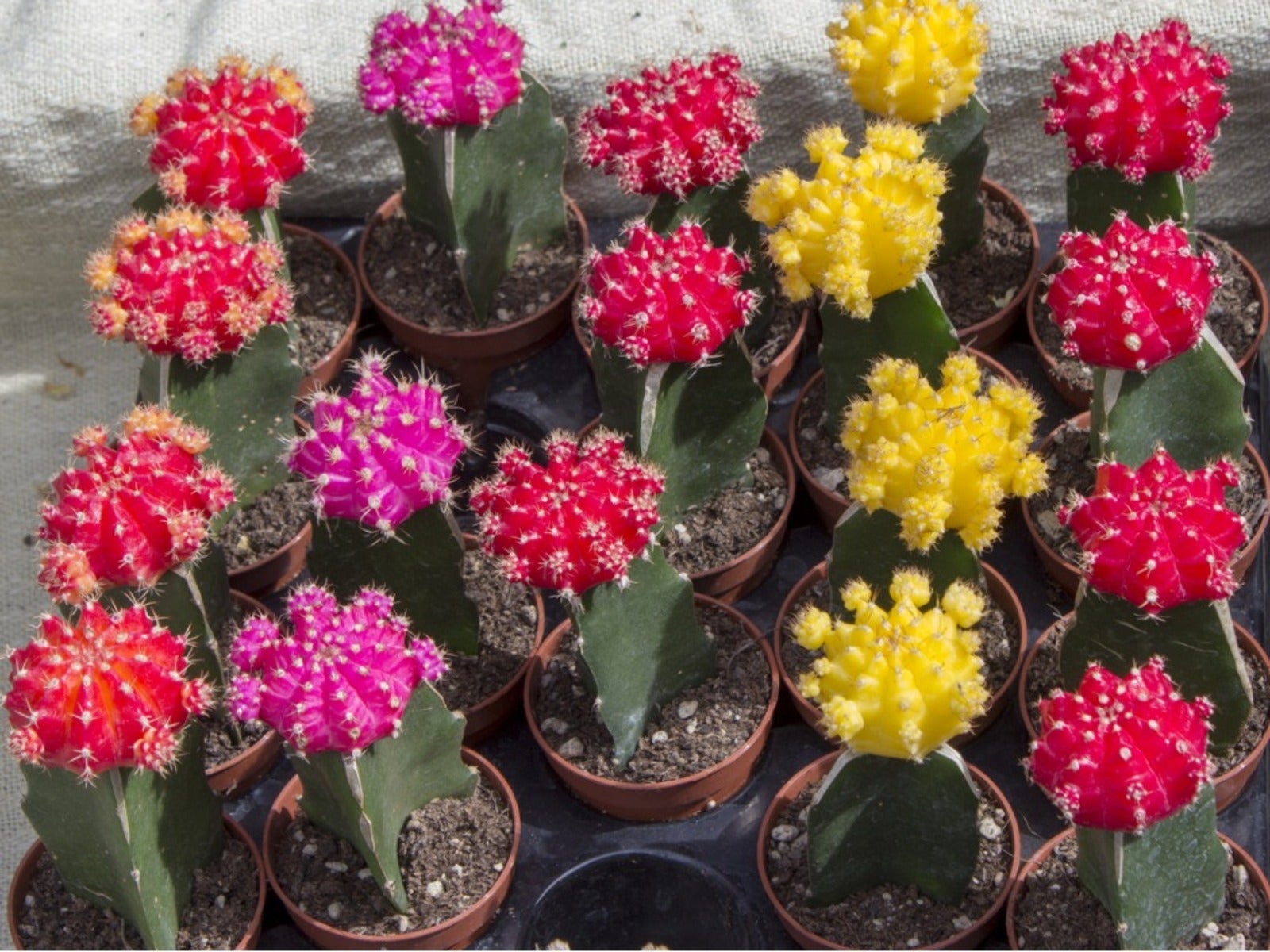Moon Cactus Info: Learn About The Care Of Moon Cactus


The vast array of sizes, textures, colors, and shapes of cacti and succulents provides nearly endless diversity for the succulent collector. Moon cactus plants are known as Gymnocalycium mihanovichii or Hibotan cactus. Strangely, the plant is something of a mutant and lacks the ability to produce chlorophyll, which means it must be grafted onto a rootstock with that ability. Instructions for how to grow a moon cactus are similar to most succulents, but these are relatively short-lived, even with good care.
Moon Cactus Info
Hibotan cacti are native to desert habitats in various parts of South America. There are over 80 species found in Argentina, Paraguay, Brazil, and Bolivia. They are a colorful group of succulents that lack the necessary chlorophyll to produce plant sugars through photosynthesis. For this reason, the plants are grafted onto a species that produces plentiful chlorophyll upon which the moon cactus can sustain itself for several years. Moon cactus plants come in vibrant bright colors of hot pink, brilliant orange, and even an almost neon yellow. They are commonly sold as gift plants and make lovely window box or southern exposure houseplants. These are small plants, generally only ½ inch (1 cm.) across, although there are cultivars that get up to 8 inches (20 cm.) in diameter.
Propagation of Moon Cactus
The moon cactus is usually sold already grafted in a process that removes the bottom of the Hibotan and the top of the rootstock cactus. The two halves are set together at the cut ends and soon heal together. The life of the moon cactus can be extended by re-grafting it onto a fresh rootstock. It can also be grown from seed, but this takes at least a year for a recognizable specimen. Sow the seeds over a dry succulent mixture and then cover with a sprinkle of fine grit. Moisten the flat and move it to a warm location for germination. Once the seedlings are large enough to remove, re-plant them in groups for best effect. More commonly, moon cactus propagation is achieved by removing the offsets, which are smaller versions of the parent plant growing from the base of the rootstock. These divide away easily and root readily in a cactus potting soil.
How to Grow a Moon Cactus
Purchased plants will come with moon cactus info that relates to the plants' care and cultivation needs. In the event that it doesn't, care of moon cactus is similar to any succulent or cactus species. Hibotan plants prefer temperatures on the warm side but need a minimum of 48 degrees F. (9 C.) to survive. Wild plants grow in the shelter of taller specimens which shade them from the scorching sun, so indoor plants should be partially shielded from bright sunlight by slatted blinds during the brightest part of the day. Use unglazed shallow pots with numerous drainage holes to prevent standing water at the root zone. Water deeply and then allow the soil to completely dry to the base of the pot before reapplying moisture. Suspend watering in the winter months and repot in spring to reintroduce nutrient dense soil. The moon cactus prefers to have a crowded home, which means you can repot in the same pot for several years. In rare cases, and when care of moon cactus is optimum, you may be rewarded with small red to pink flowers in late spring to early summer.
Gardening tips, videos, info and more delivered right to your inbox!
Sign up for the Gardening Know How newsletter today and receive a free copy of our e-book "How to Grow Delicious Tomatoes".

Bonnie Grant is a professional landscaper with a Certification in Urban Gardening. She has been gardening and writing for 15 years. A former professional chef, she has a passion for edible landscaping.
-
 Try The Trend – Turn Any Bed Into A Keyhole Garden With This Clever In-Ground Composter
Try The Trend – Turn Any Bed Into A Keyhole Garden With This Clever In-Ground ComposterKeyhole gardening is an efficient and sustainable practice that saves space. Get started on this DIY project quickly and easily with an in-ground composter.
By Bonnie L. Grant
-
 4 Superfast Composting Methods: Turn Waste Into Garden Gold In 30 Days Or Less
4 Superfast Composting Methods: Turn Waste Into Garden Gold In 30 Days Or LessTry the fastest composting methods to turbocharge your pile and transform kitchen scraps and garden waste into finished compost in just a few weeks.
By Mary Ellen Ellis
